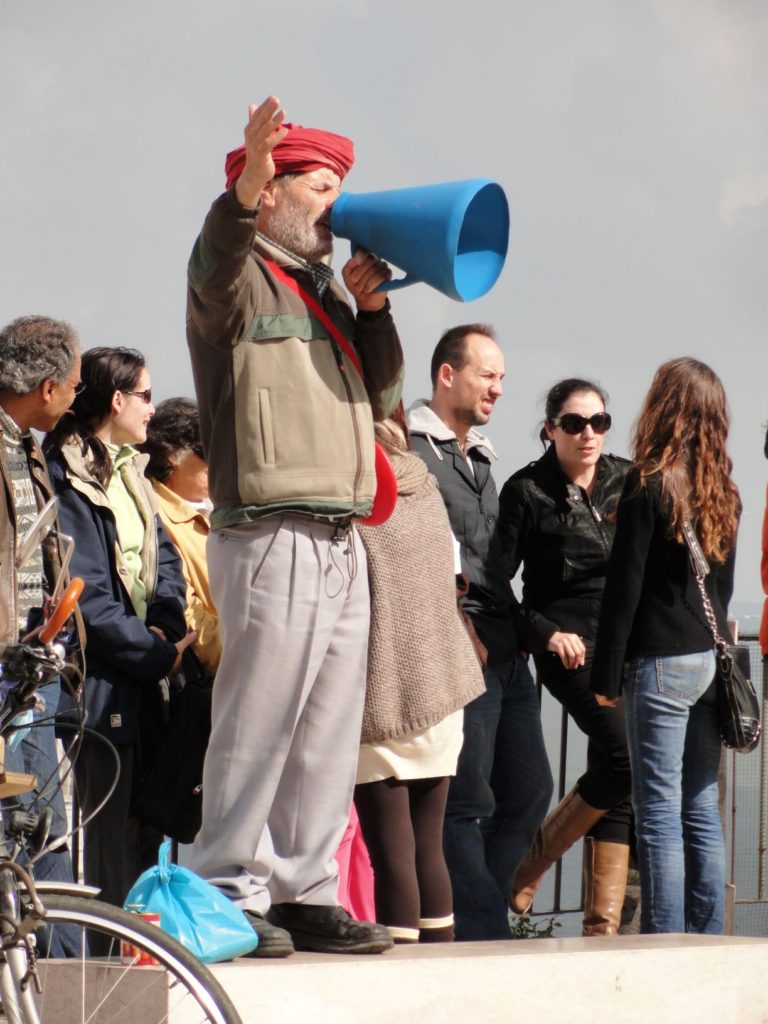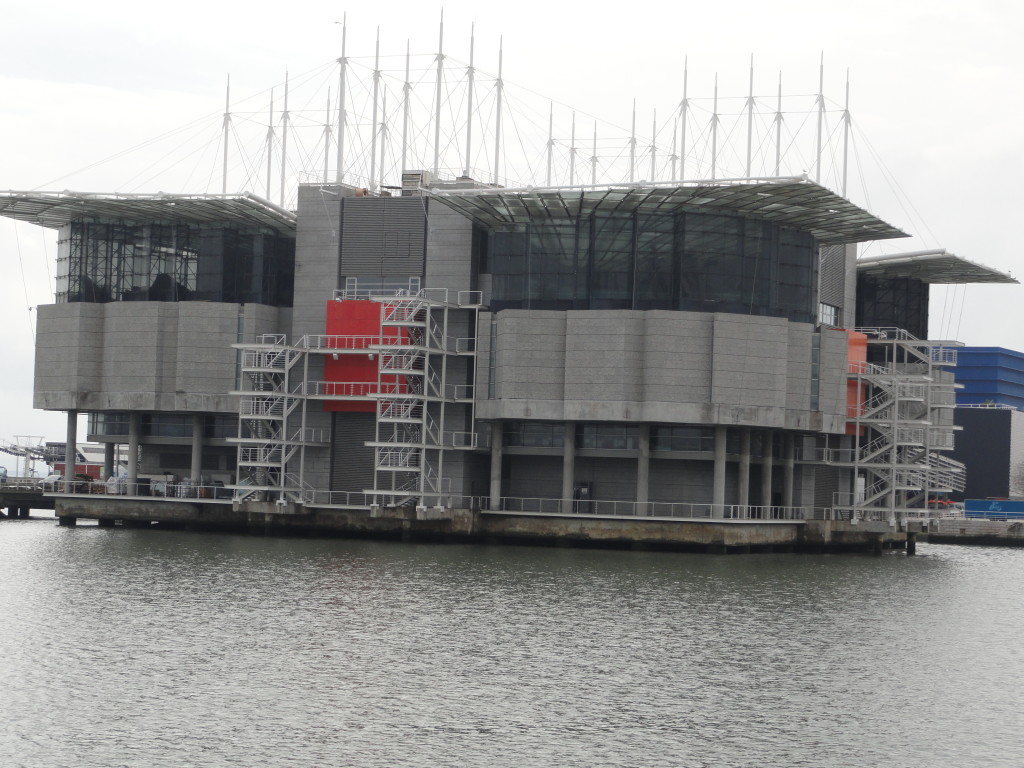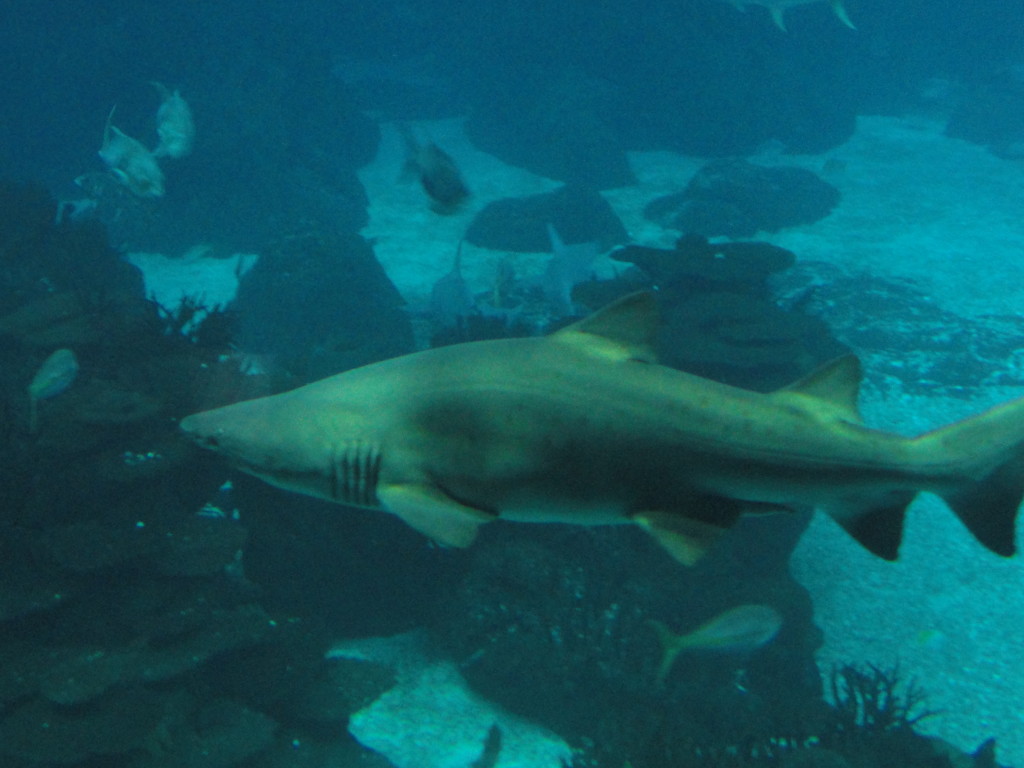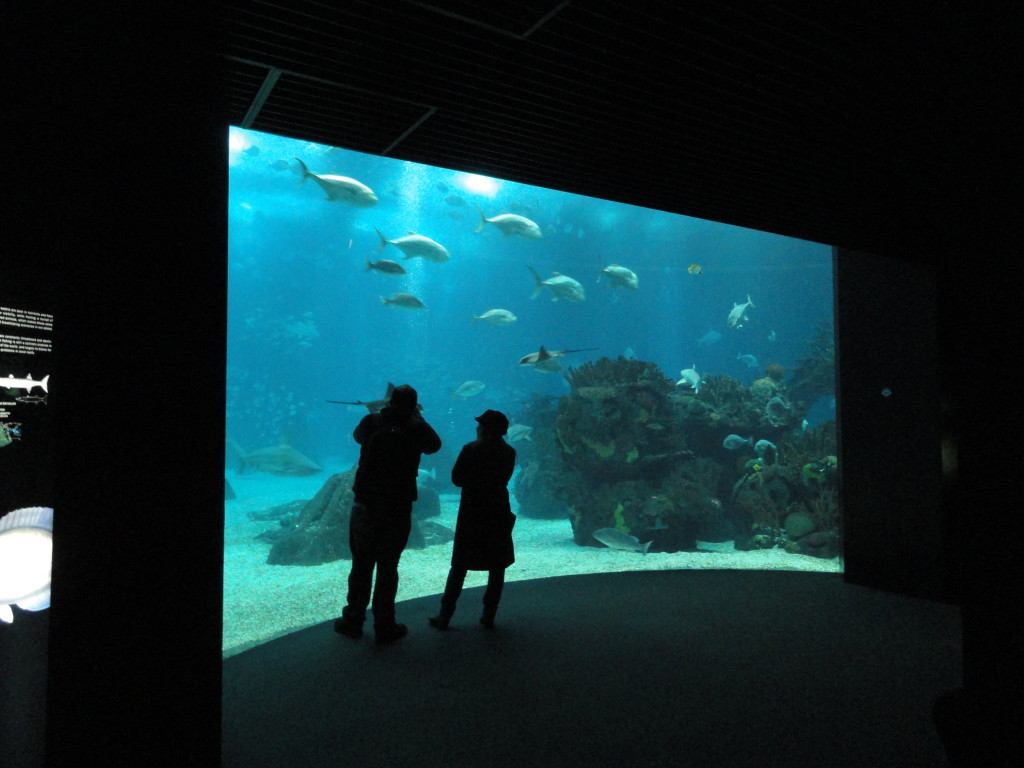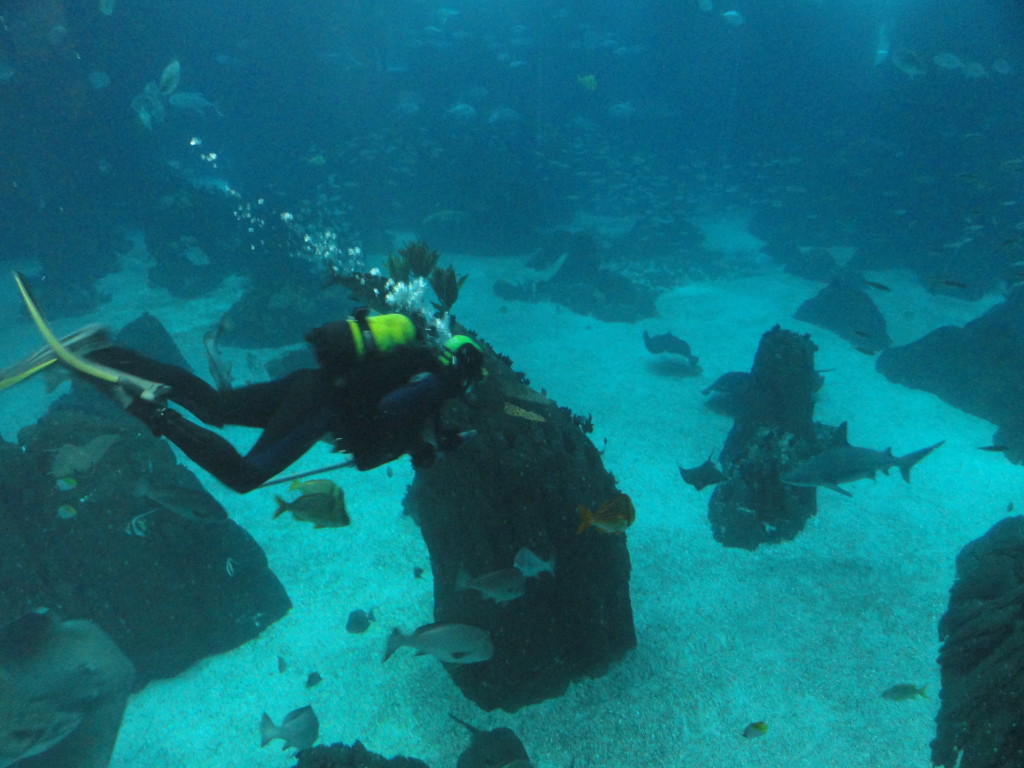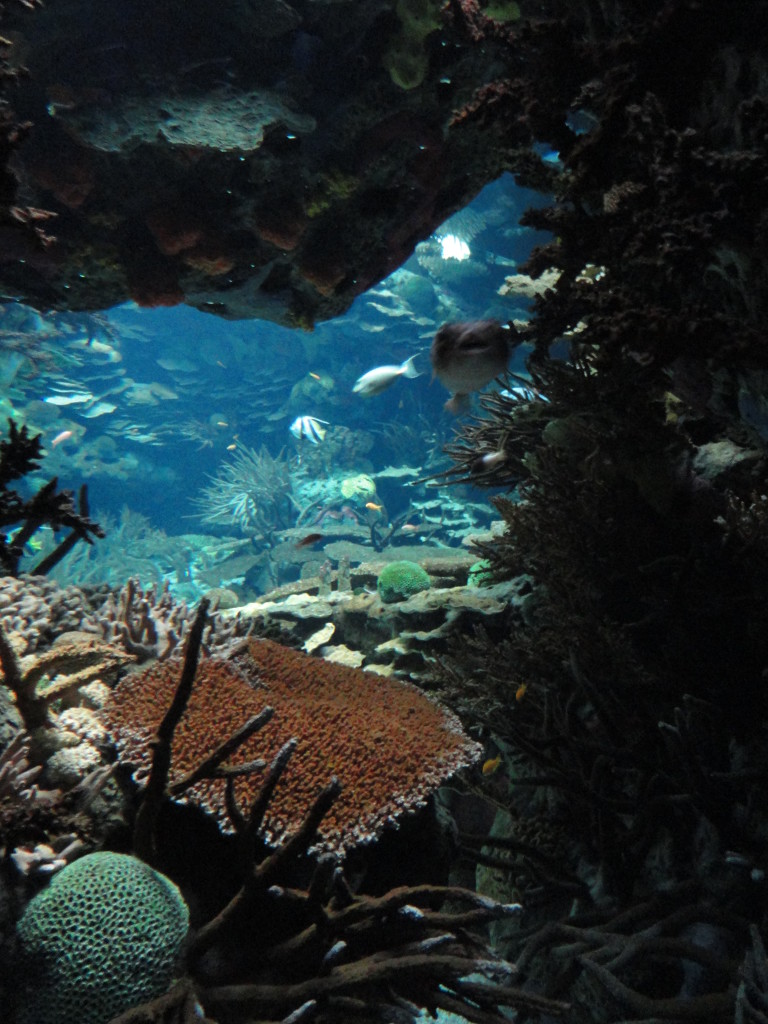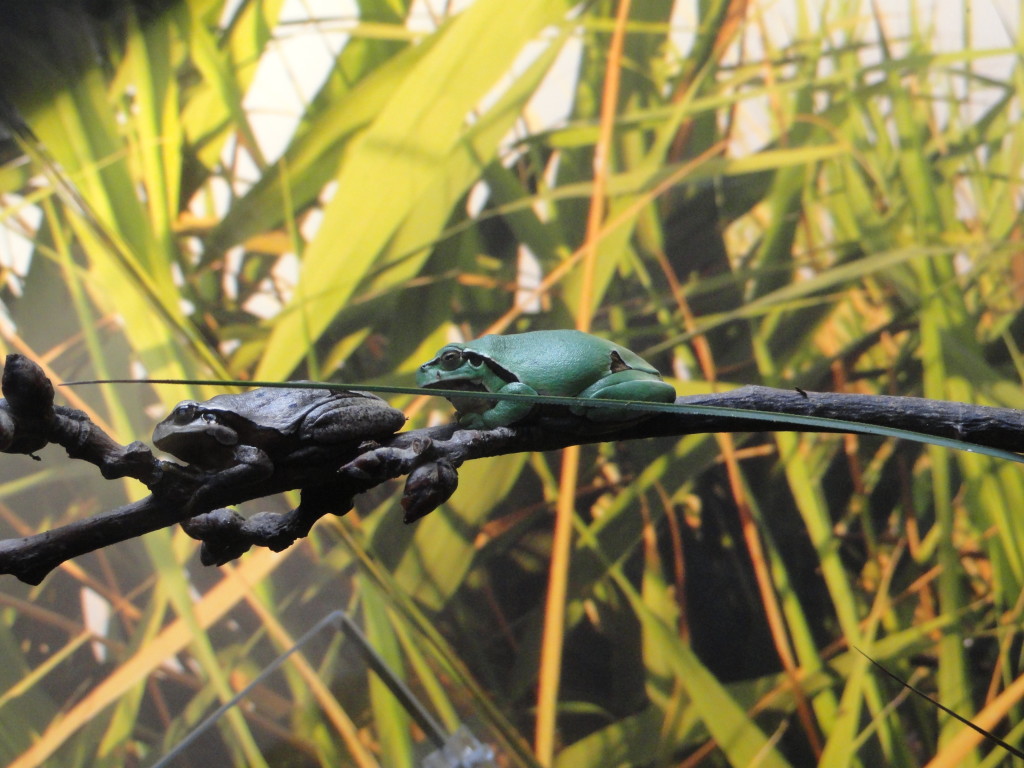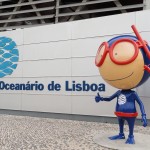A few days ago, I returned from a two-and-a-half-week Windstar cruise-plus trip around the Mediterranean. We started in Lisbon and ended in Barcelona, but made several stops along the way, including Gibraltar, and Morocco. Here are the places we stopped. It was an amazing experience.
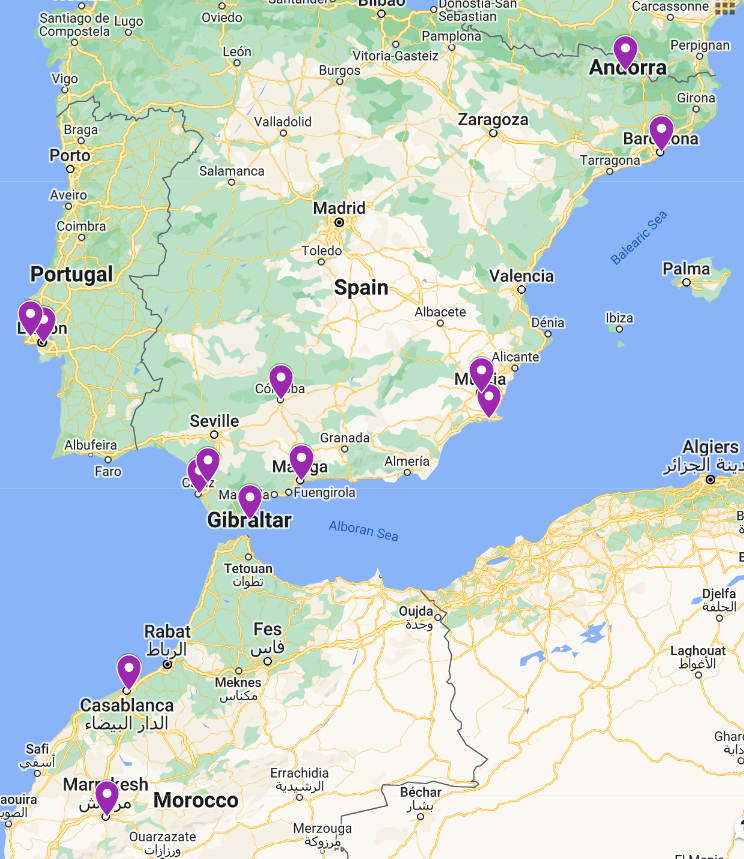
This is our fourth Windstar trip. Previously we sailed in the Caribbean, yachted in the Baltic Sea, and motored from Hong Kong to Singapore via the Philippines, Borneo, and Brunei. We were supposed to be on another trip in the Caribbean to northern South America in December 2019 but it was canceled at the last minute due to mechanical difficulties. Then COVID hit and nothing happened for a while. Last year we were booked for a trip starting and ending in Istanbul that bounced around the Black Sea, including Odessa, Ukraine. Needless to say, the cruise line canceled that trip as soon as Russia invaded Ukraine. We ended up in Iceland instead, then a trip to Tanazania near the end of 2022. This was our first Windstar since late 2018 and it was wonderful. The ships carry only about 300 passengers, so unlike the big multi-thousand hotel ships, Windstar gives you the chance to get to know the other passengers and crew.
Looking at the map above you can see there are a lot of markers inland. Obviously, we didn’t sail the ship to Marrakesh, but in retrospect it turned out that we took excursions to other cities at each stop other than Gibraltar. That expanded the cultural immersion immensely.
We arrived in Lisbon, Portugal early on Thursday. The cruise didn’t board until Saturday afternoon so we played tourist in the city, hitting all the hot spots like the castle, the Belem tower, the Monument to the Discoveries, and wandering the neighborhoods. On Friday we took the train out to Sintra. Not only was it the only rainy day during the entire trip, it was a day of deluge. It rained so hard it soaked through my otherwise trusty umbrella and created its own rain on me. Still, it was worth the trip. I had been in Lisbon and Sintra about 15 years ago but hadn’t planned ahead so didn’t even see much other than the famed Oceanario.
The first stop on the ship was Gibraltar and a tour around the “Rock” and its famous apes and St. Michael’s Cave. Then we were off to Casablanca, Morocco. I had always wanted to visit because of the Humphrey Bogart movie, but was told by others that the trip out to Marrakesh was a better use of time. So onto a 12-hour excursion to the city made famous (at least to me) by the Crosby, Stills, and Nash song, “Marrakesh Express.” Long day but worth it.
Then it was back to bounce around Spain. Porting at Cadiz overnight, we spent one day roaming the city and another day going out to Jerez, where we toured a vineyard, wine cellar, and best of all, got to taste two kinds of sherry and a brandy. [Yes, we bought some to take home] Malaga was another overnighter so we walked Picasso’s birth city one day and on the other day took a trip out to Cordoba, home of a huge mosque that was turned into a church (the mosque had been built on a previous church; such back and forth happened a lot as the Muslim Moors and Christians took turns invading each other’s space). Our stop in Cartagena gave us an opportunity to go out to Murcia, heavy in preparations for one of the seemingly ubiquitous music festivals, and still had plenty of time to wander the city of Cartagena itself.
The Windstar cruise ended in Barcelona, Spain. Again, I had been there about 15 years ago but only for a day. This time I was determined to get into the Sagrada Familia (which has grown a lot in 15 years), the Picasso Museum, and spend some time in the Catalonian city of Gaudi. In keeping with the trend of maximizing the opportunities, we took a 3+ hour bus ride from Barcelona to the tiny country of Andorra, deep in the Pyrenees mountains nestled on the border between Spain and France. I’ll write more later, but one thing I noticed is that is that English seemed to disappear as we got into the Catalonia region of Spain. Barcelonians and the greater Catalonians are feverishly protective of their Catalan heritage, going so far as to declare their independence from Spain (which neither Spain nor any other country I’m aware of has conceded to). This was especially true in Andorra where I had to struggle through my rudimentary Spanish and French just to order lunch (the waitress laughed when I asked for an English menu).
Two and half weeks later we’re back in the USA, having visited five countries, thirteen cities, one aquarium, and two or three thousand photo opportunities. It will take a while to sort through the photos, but I’ll be back to flesh out the highlights of key stops.
[Map created by Ru Sun, who in addition to being such a great travel companion, had to survive my temporary insanity in the tower of the Sagrada Familia.]

Lincoln: The Fire of Genius: How Abraham Lincoln’s Commitment to Science and Technology Helped Modernize America is available at booksellers nationwide.
Limited signed copies are available via this website. The book also listed on Goodreads, the database where I keep track of my reading. Click on the “Want to Read” button to put it on your reading list. Please leave a review on Goodreads and Amazon if you like the book.
You also follow my author page on Facebook.
David J. Kent is President of the Lincoln Group of DC and the author of Lincoln: The Fire of Genius: How Abraham Lincoln’s Commitment to Science and Technology Helped Modernize America and Lincoln: The Man Who Saved America.
His previous books include Tesla: The Wizard of Electricity and Edison: The Inventor of the Modern World and two specialty e-books: Nikola Tesla: Renewable Energy Ahead of Its Time and Abraham Lincoln and Nikola Tesla: Connected by Fate.



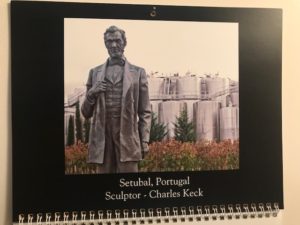 Perhaps one of the oddest locations for an Abraham Lincoln statue is at a winery in Portugal. Which gets us to David Wiegers’s calendar entry for July. And a chance to reminisce on my quick visit to Portugal near the three years I spent living and working in Brussels.
Perhaps one of the oddest locations for an Abraham Lincoln statue is at a winery in Portugal. Which gets us to David Wiegers’s calendar entry for July. And a chance to reminisce on my quick visit to Portugal near the three years I spent living and working in Brussels.